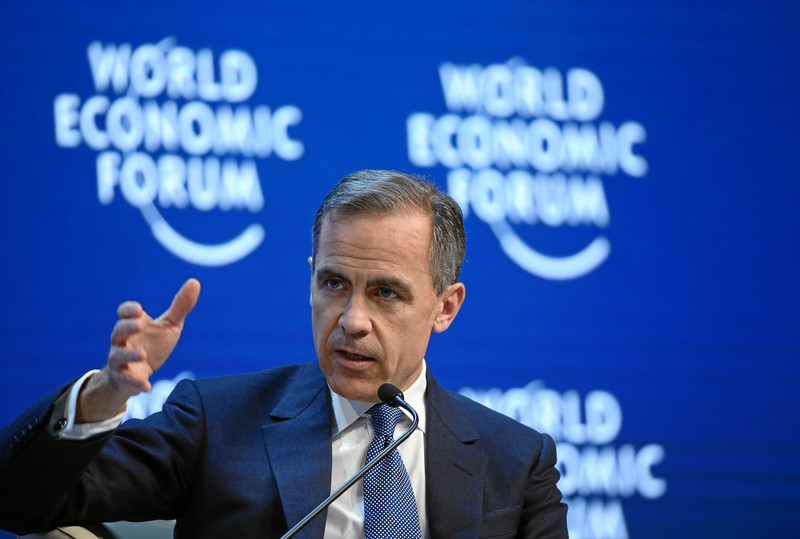Alberta
Oil sands technology competition to generate low emissions carbon fibre moves into final phase

Bryan Helfenbaum, associate vice-president of clean energy with Alberta Innovates, holds a hockey stick made with carbon fibre derived from oil sands bitumen. Photo by Dave Chidley for the Canadian Energy Centre
From the Canadian Energy Centre
By Will Gibson and Deborah Jaremko
Study found carbon fibre made from oil sands bitumen has 69 per cent lower emissions than conventional sources
Having spent most of a long and distinguished academic career working with metals, Weixing Chen became fascinated by the potential of repurposing a heavy hydrocarbon from Alberta’s oil sands into a high-value product for a low-carbon economy.
The product is carbon fibre – thin as human hair but four times stronger than steel – and research has shown producing it from oil sands bitumen generates lower greenhouse gas emissions than today’s sources.
“This is a great opportunity for me to challenge myself moving forward to develop this technology that will benefit society,” says Chen, a chemical and material engineering professor at the University of Alberta.
His team at Edmonton-based Thread Innovations is one of five receiving a total $15 million in funding in the final round of the Carbon Fibre Grand Challenge, announced in December.
Great potential for carbon fibre
With its light weight and high strength, today carbon fibre is used in products like aircraft and spacecraft parts, racing car bodies, bicycles, hockey sticks and golf clubs.
It has great potential, but its use is limited by cost. Carbon fibre averages $10 to $12 per pound, compared to less than $1 per pound for steel.
Part of the Alberta competition is that the carbon fibre derived from oil sands bitumen must cost 50 per cent less than current carbon fibre products.
This would unlock new markets for carbon fibre, says Byran Helfenbaum, associate vice-president of clean energy for Alberta Innovates, which is funding the challenge along with Emissions Reduction Alberta.
“At the end of this phase, the intention is the technology is at a point where a company could make a funding decision for if not a commercial project, then at least a commercial demonstration project,” he says.
“It’s really to get it out of the lab and start hitting the key specifications, identifying the existing and new markets, and pumping out prototypes that can be tested. We have already generated our first two prototypes, a truck side mirror and a hockey stick, but we need to go bigger and faster and test a wide range of market opportunities.”
Long-term need for carbon-based products
The future is likely to be full of carbon fibre products, Helfenbaum says.
“This ‘low-carbon future’ is a misnomer. When we say low-carbon future, what we mean is let’s keep carbon out of the atmosphere. Carbon is still going to be around us in solid form, and probably in increasingly higher amounts,” he says.
“We’re going to have 10 billion people on the planet by mid-century. They need energy, but they also need stuff. They need housing, infrastructure, and consumer goods. And most of that stuff is or can be made of pure carbon.”
Lower emissions from oil sands carbon fibre
Most carbon fibre today is generated from a chemical compound called polyacrylonitrile (PAN), which is derived from a component of natural gas.
A recent study by researchers at the University of Alberta found that life cycle emissions from carbon fibre derived from oil sands bitumen are 69 per cent lower than PAN-based product.
It’s the high carbon content of oil sands bitumen that provides the benefit, Helfenbaum says.
“The heaviest fraction of bitumen takes more energy to break down to be turned into fuels. But that same fraction can be used to produce carbon fibre with fewer greenhouse gas emissions than the current PAN process,” he says.
“If we are successful in reducing its cost, then it can be deployed into new markets that will further reduce carbon emissions, such as lightening passenger vehicles and improving the longevity of concrete infrastructure.”
Adding value while reducing emissions
The Carbon Fibre Grand Challenge is part of Alberta Innovates’ broader Bitumen Beyond Combustion research program. The work considers opportunities to use bitumen to create value-added products other than fuels like gasoline and diesel.
“From an economic perspective, the Bitumen Beyond Combustion program could triple the value of a barrel of bitumen,” Helfenbaum says.
“Carbon fibre is among the most valuable of those products, but it’s not the only one. This is potentially in the tens of billions of dollars a year of gross revenue opportunity, so this is transformational.”
It also presents environmental benefits.
“Eighty per cent of the emissions associated with petroleum happen at combustion of gasoline, diesel, and jet fuel so by diverting into these products, that becomes carbon that is sequestered forever and doesn’t get into the atmosphere,” he says.
Pathway to commercial production
Winners of the grand challenge will have a credible pathway to manufacturing 2,000 tonnes or more of carbon fibre per year. The challenge is scheduled to end in summer 2026.
Thread Innovations is building a new facility to produce samples for potential buyers and demonstrate the ability to scale up production. This phase will also focus on improving characteristics of the carbon fibre produced by their technology to build commercial demand.
“Our target is to complete the current project and then establish a commercialization plan in 2025,” says Chen.
Alberta
Big win for Alberta and Canada: Statement from Premier Smith

Premier Danielle Smith issued the following statement on the April 2, 2025 U.S. tariff announcement:
“Today was an important win for Canada and Alberta, as it appears the United States has decided to uphold the majority of the free trade agreement (CUSMA) between our two nations. It also appears this will continue to be the case until after the Canadian federal election has concluded and the newly elected Canadian government is able to renegotiate CUSMA with the U.S. administration.
“This is precisely what I have been advocating for from the U.S. administration for months.
“It means that the majority of goods sold into the United States from Canada will have no tariffs applied to them, including zero per cent tariffs on energy, minerals, agricultural products, uranium, seafood, potash and host of other Canadian goods.
“There is still work to be done, of course. Unfortunately, tariffs previously announced by the United States on Canadian automobiles, steel and aluminum have not been removed. The efforts of premiers and the federal government should therefore shift towards removing or significantly reducing these remaining tariffs as we go forward and ensuring affected workers across Canada are generously supported until the situation is resolved.
“I again call on all involved in our national advocacy efforts to focus on diplomacy and persuasion while avoiding unnecessary escalation. Clearly, this strategy has been the most effective to this point.
“As it appears the worst of this tariff dispute is behind us (though there is still work to be done), it is my sincere hope that we, as Canadians, can abandon the disastrous policies that have made Canada vulnerable to and overly dependent on the United States, fast-track national resource corridors, get out of the way of provincial resource development and turn our country into an independent economic juggernaut and energy superpower.”
Alberta
Energy sector will fuel Alberta economy and Canada’s exports for many years to come

From the Fraser Institute
By any measure, Alberta is an energy powerhouse—within Canada, but also on a global scale. In 2023, it produced 85 per cent of Canada’s oil and three-fifths of the country’s natural gas. Most of Canada’s oil reserves are in Alberta, along with a majority of natural gas reserves. Alberta is the beating heart of the Canadian energy economy. And energy, in turn, accounts for one-quarter of Canada’s international exports.
Consider some key facts about the province’s energy landscape, as noted in the Alberta Energy Regulator’s (AER) 2023 annual report. Oil and natural gas production continued to rise (on a volume basis) in 2023, on the heels of steady increases over the preceding half decade. However, the dollar value of Alberta’s oil and gas production fell in 2023, as the surging prices recorded in 2022 following Russia’s invasion of Ukraine retreated. Capital spending in the province’s energy sector reached $30 billion in 2023, making it the leading driver of private-sector investment. And completion of the Trans Mountain pipeline expansion project has opened new offshore export avenues for Canada’s oil industry and should boost Alberta’s energy production and exports going forward.
In a world striving to address climate change, Alberta’s hydrocarbon-heavy energy sector faces challenges. At some point, the world may start to consume less oil and, later, less natural gas (in absolute terms). But such “peak” consumption hasn’t arrived yet, nor does it appear imminent. While the demand for certain refined petroleum products is trending down in some advanced economies, particularly in Europe, we should take a broader global perspective when assessing energy demand and supply trends.
Looking at the worldwide picture, Goldman Sachs’ 2024 global energy forecast predicts that “oil usage will increase through 2034” thanks to strong demand in emerging markets and growing production of petrochemicals that depend on oil as the principal feedstock. Global demand for natural gas (including LNG) will also continue to increase, particularly since natural gas is the least carbon-intensive fossil fuel and more of it is being traded in the form of liquefied natural gas (LNG).
Against this backdrop, there are reasons to be optimistic about the prospects for Alberta’s energy sector, particularly if the federal government dials back some of the economically destructive energy and climate policies adopted by the last government. According to the AER’s “base case” forecast, overall energy output will expand over the next 10 years. Oilsands output is projected to grow modestly; natural gas production will also rise, in part due to greater demand for Alberta’s upstream gas from LNG operators in British Columbia.
The AER’s forecast also points to a positive trajectory for capital spending across the province’s energy sector. The agency sees annual investment rising from almost $30 billion to $40 billion by 2033. Most of this takes place in the oil and gas industry, but “emerging” energy resources and projects aimed at climate mitigation are expected to represent a bigger slice of energy-related capital spending going forward.
Like many other oil and gas producing jurisdictions, Alberta must navigate the bumpy journey to a lower-carbon future. But the world is set to remain dependent on fossil fuels for decades to come. This suggests the energy sector will continue to underpin not only the Alberta economy but also Canada’s export portfolio for the foreseeable future.
-

 2025 Federal Election11 hours ago
2025 Federal Election11 hours agoPoilievre To Create ‘Canada First’ National Energy Corridor
-

 Automotive2 days ago
Automotive2 days agoAuto giant shuts down foreign plants as Trump moves to protect U.S. industry
-

 Energy1 day ago
Energy1 day agoTrump Takes More Action To Get Government Out Of LNG’s Way
-

 2025 Federal Election1 day ago
2025 Federal Election1 day agoMainstream Media Election Coverage: If the Election Was a NHL Game, the Ice Would be Constantly Tilted Up and to the Left
-

 Health1 day ago
Health1 day agoSelective reporting on measles outbreaks is a globalist smear campaign against Trump administration.
-

 2025 Federal Election1 day ago
2025 Federal Election1 day agoMark Carney is trying to market globalism as a ‘Canadian value.’ Will it work?
-

 International19 hours ago
International19 hours agoFREE MARINE LE PEN!’: Trump defends French populist against ‘lawfare’ charges
-

 2025 Federal Election2 days ago
2025 Federal Election2 days agoWill Four More Years Of Liberals Prove The West’s Tipping Point?








